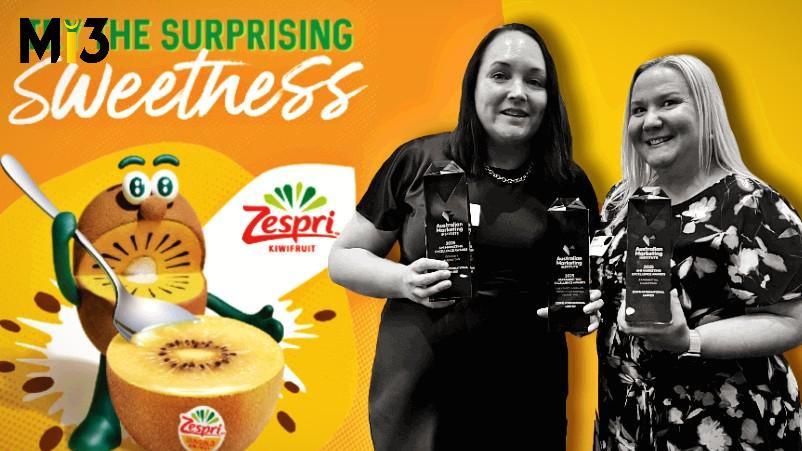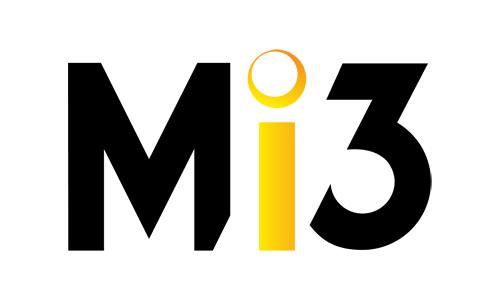Two singing and dancing kiwifruit characters have helped Zespri International more than double sales in Australia over the past five years and lifted penetration of its SunGold kiwifruit products to 22.9 per cent. It’s the power of compounding creative, investing in distinctive assets, understanding your target audience and importantly, knowing when it’s time to trade up on health benefits to taste as an underlying communications platform, says the group’s local marketing leader, Janice Byrnes. Having received multiple gongs for its ‘Crazy Tasty’ fruit and the recent ‘Healthier Way’s pilot including at the recent Australian Marketing Institute Excellence Awards, she shares what’s it taken to bring the creative to life.
Author: admin
Bank Australia marks decade in market with doubling of customer base
Bank Australia has reported a significant milestone, marking its 10th anniversary with a doubling of its customer base to 300,000 and a five-fold increase in total assets.
Canva and Sportsbet creatives to fill final speaker spots for 2025 Evolution Summit
The In-House Agency Council (IHAC) has announced the final lineup of speakers for its 2025 Evolution Summit with in-house creatives from Canva, Sportsbet, and Time Under Tension all set to appear.
Mastercard launches AI-powered ‘Transit Tales’ for Sydney commuters
Mastercard has introduced ‘Transit Tales’, a new digital experience aimed at enhancing the daily commute for Sydney’s train passengers. This service utilises AI and real-time transit data to deliver personalised audio stories tailored to the duration of each commuter’s journey.
Seventh Wave Rising: AI to slash SaaS pricing, collapse tech stacks, kill search as we know it – and why marketers should wait before locking in
AI is reshaping the rules of business at breakneck speed – and likewise for marketing. Legendary tech sector analyst, founder, CEO and chairman of global analyst firm Forrester, George Colony, calls this the Seventh Wave. It’s an upheaval that will eclipse previous waves like the internet, mobile and cloud. It brings turmoil but also eventual re-ordering. For marketers, agencies, and media owners, the implications are extraordinary. Traditional SaaS pricing models are breaking down and legacy vendors are scrambling with defensive AI “upgrades” that mask deeper weakness in their systems. Colony says Agentic AI — autonomous systems that learn, adapt and act — is poised to collapse the tech stack, creating both risk and opportunity for brands. At the same time he explains why Google’s dominance in search is under existential threat – although its latest quarterly earnings results say otherwise. SEO will also fade into irrelevance, says Colony. Beyond, the open web Colony says will morph into the web’s version of AM radio and in its place, a new set of tech cartels is forming, each manoeuvring to entrench control. Colony sets out the strategic risks, the likely winners, and the moves marketers must make now. It is advice that many tech vendors will fear.
Webjet partners with AWS and Microsoft for AI-powered travel solutions
Webjet Group has announced new partnerships with Amazon Web Services (AWS) and Microsoft to develop AI solutions aimed at enhancing customer experience and operational efficiency in the travel industry. The collaborations are part of Webjet’s five-year growth strategy, which focuses on leveraging AI to address complex travel challenges and drive technology-led growth.
Carsales rolls out updated brand identity
Carsales has announced a refreshed brand identity aimed at unifying its family of marketplace brands.
The death of search, the fall of SaaS, the end of the web, the rise of agents, and the paradox of Colony’s Law: Forrester CEO on the biggest business disruption you will ever likely face
The marketing technology machine is being torn apart at the joints. According to legendary tech analyst and Forrester founder George Colony, we’ve just entered technology’s Seventh Wave. Its arrival presages an AI-led upheaval that renders the internet, mobile, and cloud revolutions warm-up acts. Colony says this isn’t just another tech cycle. It’s a structural reset. One that brings chaos first, then a new order. And marketers, agencies, and media owners are standing right in the blast zone. Traditional SaaS pricing? Breaking down. Legacy vendors? Scrambling to slap AI lipstick on an increasingly wobbly pig. Beneath it all, a deeper reckoning is underway: Agentic AI underpinning autonomous systems that learn, adapt and act is poised to flatten the marketing stack entirely. That’s a direct threat to platforms, but it’s also a moment of generational opportunity for brands ready to play offense. His contrarian advice, though, keep your powder dry. Meanwhile, Google’s monopoly on search is fraying, (despite its latest financial results). SEO as a channel is dying. The open web? It’s morphing into something like AM radio, he says, still there, but barely relevant. In its place: a new set of cartels forming around large language models, or whatever they spawn. Colony warns that these players are moving fast to capture territory, lock in advantage, and rewrite the terms of engagement. For marketers, the implications are existential. The decisions they make now will define who wins the next decade, and beyond.
Coles Group reports over $1bn in profits as Supermarkets revenues continue to grow
Coles Group has reported a 3.6% increase in sales revenue for the financial year, with Supermarkets sales revenue growing by 4.3% and Liquor sales revenue by 1.1%.
Super Retail Group reports stronger sales, NPAT dip and higher loyalty membership amidst challenging retail environment
Super Retail Group has reported single-digit growth in group sales to $4.1 billion for the FY25 year, but seen a slight dip in gross margins and net profits. But it’s also chalked up 1 million more active loyalty program members to 12.5m, a base now accounting for 79% of total sales.










